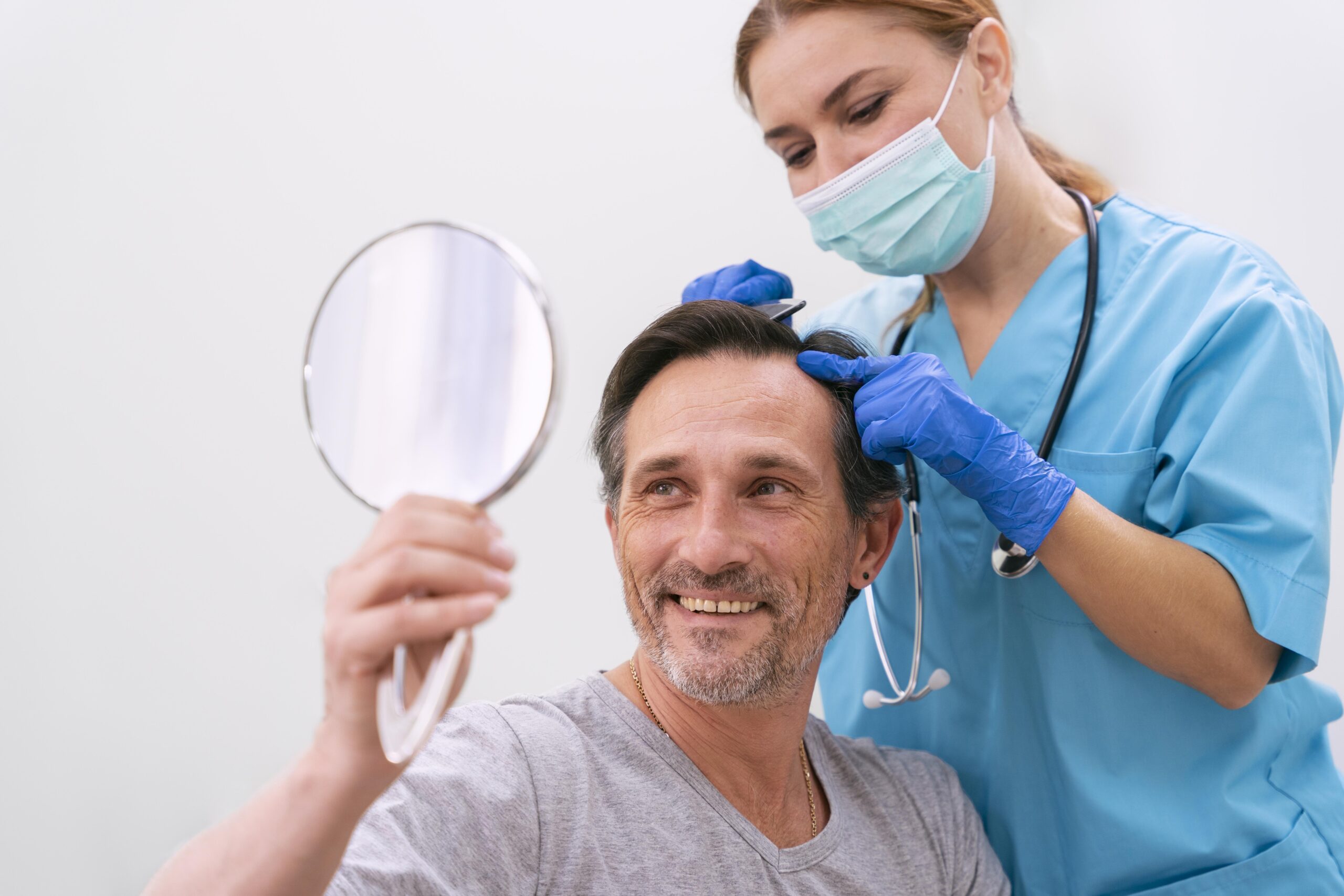Introduction:
Having a hair transplant is a significant decision for many individuals seeking to restore their hair and boost their confidence. However, it can be disheartening to notice hair falling out after just one year. In this blog post, we will delve into the reasons behind hair transplant grafts falling out and provide insights into potential solutions. Understanding the factors involved will help you manage your expectations and make informed decisions throughout your hair restoration journey.
Table of Contents
Solutions and Tips for Dealing with Hair Loss after a Transplant
5.1 Proper Post-Transplant Care
5.2 Patience and Time
5.3 Follow-Up with Your Hair Transplant Surgeon
5.4 Consider Additional Treatments or Procedures
The Hair Growth Cycle and Shedding:

Understanding the natural hair growth cycle is essential to comprehend hair loss after a hair transplant. Hair follicles go through various stages, including growth (anagen), transition (catagen), and resting (telogen) phases. Shedding is a normal part of the hair cycle, and everyone experiences it. Therefore, it’s crucial to differentiate between temporary shedding and permanent hair loss.
Shock Loss: Temporary Hair Shedding:
Shortly after a hair transplant, some patients may experience a phenomenon called “shock loss.” This temporary shedding occurs when existing hairs in the transplant area go into a resting phase due to the trauma of the procedure. It is essential to note that shock loss is a normal part of the healing process, and new hair growth will eventually replace the lost hair.
Telogen Effluvium: Hair Shedding Due to Stress:
Stressful events, both physical and emotional, can lead to a condition called telogen effluvium. This condition triggers excessive shedding of hair, including transplanted hair. Stressors like illness, surgery, or significant life changes may cause temporary disruptions in the hair growth cycle, resulting in hair loss. However, it is important to understand that the transplanted hair follicles remain intact and will regrow after the shedding phase.
Graft Survival: Factors Affecting Long Term Results:
The survival of transplanted hair grafts depends on various factors, including the skill of the surgeon, the quality of the donor hair, and the post-operative care. While hair transplants offer long-term results, some grafts may not survive due to individual factors, such as poor blood supply, inadequate healing, or underlying health conditions. It’s crucial to have realistic expectations and consult with a qualified surgeon to discuss potential risks and outcomes.
Solutions and Tips for Dealing with Hair Loss after a Transplant:

5.1 Proper Post-treatment Care: Hair Loss at 20: Causes, Solutions, and Support
Following your surgeon’s instructions diligently is crucial to ensure optimal healing and graft survival. This includes taking prescribed medications, avoiding strenuous activities, protecting the scalp from direct sunlight, and following a healthy lifestyle.
5.2 Patience and Time:
Hair regrowth after a transplant takes time. It’s important to have patience and understand that hair follicles go through natural growth cycles. It may take several months to a year for the transplanted hair to fully grow and achieve the desired results.
5.3 Follow-Up with Your Hair treatment Surgeon:
Regular follow-up visits with your hair treatment surgeon are essential. These visits allow your surgeon to monitor your progress, address any concerns or questions you may have, and provide personalized guidance based on your unique situation.
5.4 Consider Additional Treatments or Procedures:
In some cases, additional treatments or procedures may be recommended to enhance hair growth and density. These may include medications such as minoxidil or finasteride, platelet-rich plasma (PRP) therapy, or low-level laser therapy. Consult with your surgeon to explore these options and determine what best suits your needs.
Conclusions:
Experiencing hair loss after a hair treatment can be disheartening, but it’s important to understand the underlying factors and potential solutions. Temporary shedding, shock loss, or other factors influencing graft survival can impact the appearance of transplanted hair. By following proper post-transplant care, being patient, maintaining open communication with your surgeon, and considering additional treatments if necessary, you can navigate the process with confidence and maximize the potential for successful, long-lasting results.
Remember, every individual’s hair treatment journey is unique, and it’s crucial to consult with a qualified professional to address your specific concerns and expectations. With the right care, patience, and guidance, you can achieve the desired outcomes and enjoy the benefits of your hair restoration journey.

